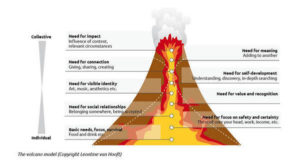“Between money and meaning”, “People, planet, profit”, etc. Impact investing has seen many catchy headline phrases. We could go on for hours.
You could say impact investing is going mainstream, with retail investment funds popping up on every corner of the investment landscape, gaining momentum with institutional investors alike and even my gardener doing his best to impress me with an article he read earlier today. Impact investing should be on every investors’ agenda, is my firm belief. But it’s not a new phenomenon though. Since The Rockefeller Foundation first coined the term impact investing at an event at their Bellagio Conference Center in 2007, the term has gained popularity throughout the investment world. From microfinance on the outskirts of presumed civilization to affordable housing development a few miles from where you live. From social impact bonds to energy finance. The colourful palet is virtually endless.
Growing pains are still evident though. For instance, let’s just focus on the term impact investing itself. Any business in the world will have an impact on the world. So, by investing in a business you will create an impact, if you like it or not. Positive or negative.
The idea behind impact investing however, is intentionally forging a positive, measurable impact alongside a financial return. Or rather, that’s what I thought when I joined Ubuntu Impact Investing. The problem is, there is no such thing as a single definition on impact investing. It is time to clarify precisely what we mean by investing with the intent to create social and environmental impacts, and measuring our progress. A standardized impact plan that documents intent, and impact statement that tracks performance, will provide the transparency we need to unleash impact investing.
Clear definitions are essential to well-functioning markets. In the case of impact investing, agreement on what it means for funds and enterprises to seek intentional, measurable social and environmental benefits is essential to further innovation, standardization, and growth.
Any fund or enterprise that seeks recognition as an impact investment, not least for soliciting third-party capital, should meet two requirements in addition to providing the usual documentation regarding expectations for financial return:
1. Providing an “Impact Plan” to Investors
The impact plan will be a standardized form used to document a fund or enterprise’s intentionality in generating social or environmental benefits. Key elements include:
- The impact goals sought by the fund or enterprise, presented in part as a set of metrics from the internationally recognized Impact Reporting and Investment Standards (IRIS) platform (examples of metrics currently in use are available at the IRIS Registry)
- A description of the way in which the fund or enterprise’s particular strategy for deploying capital, or providing goods and services, is expected to generate these impacts
- A discussion of the risks that might prevent these impacts from being realized, or that might lead to negative social or environmental consequences
2. Providing an Annual “Impact Statement” to Investors That Discloses the Fund or Enterprise’s Nonfinancial Performance
The impact statement is an annual report documenting performance against the fund or enterprise’s stated goals in the impact plan.
- Funds and enterprises should have the flexibility to track impact using whatever method they deem appropriate. This method will be described and disclosed in the impact statement.
- Funds and enterprises should also be free to choose whether or not to have their impact statement independently audited. This decision will also be disclosed.
The approach described above enables funds and enterprises to characterize and prioritize impact on their own terms, on the condition they do so transparently. It provides for accountability through the power of markets, led by investors and the choices they make, and a strong and emerging cast of information providers and advisors including dedicated advocacy groups, fund platforms, academic and applied research initiatives, investment consultants, and media outlets.
Investors will likely support those funds and enterprises with impact plans most closely aligned with their own impact objectives. Performance benchmarks will quickly emerge as funds and enterprises are recognized for seeking more — or more challenging — impacts, and because of a commitment to especially rigorous nonfinancial performance tracking and reporting.
Of all the support mechanisms needed for successful impact investing, impact rating and measurement systems are among the most critical. These systems not only help mission-focused investors and fund managers assess the social and environmental performance of their investments, but also enable impact enterprises to measure and improve their operations and services. Today, effective measurement systems such as the Global Impact Investing Rating System (GIIRS) and the Impact Reporting and Investment Standards (IRIS) are leading the pack, but continued refinement of these tools will only increase investors’ confidence and enterprises’ performance.
As far as impact investing has come in nine years, there is still more to do to make it the norm, and give everyday investors access to a range of investment products. But if we do, aspirational estimates suggest that impact investments could one day represent 1 percent of professionally managed global assets, channeling up to hundreds of billions of dollars towards solutions that can address some of our biggest problems, from poor health to climate change.


